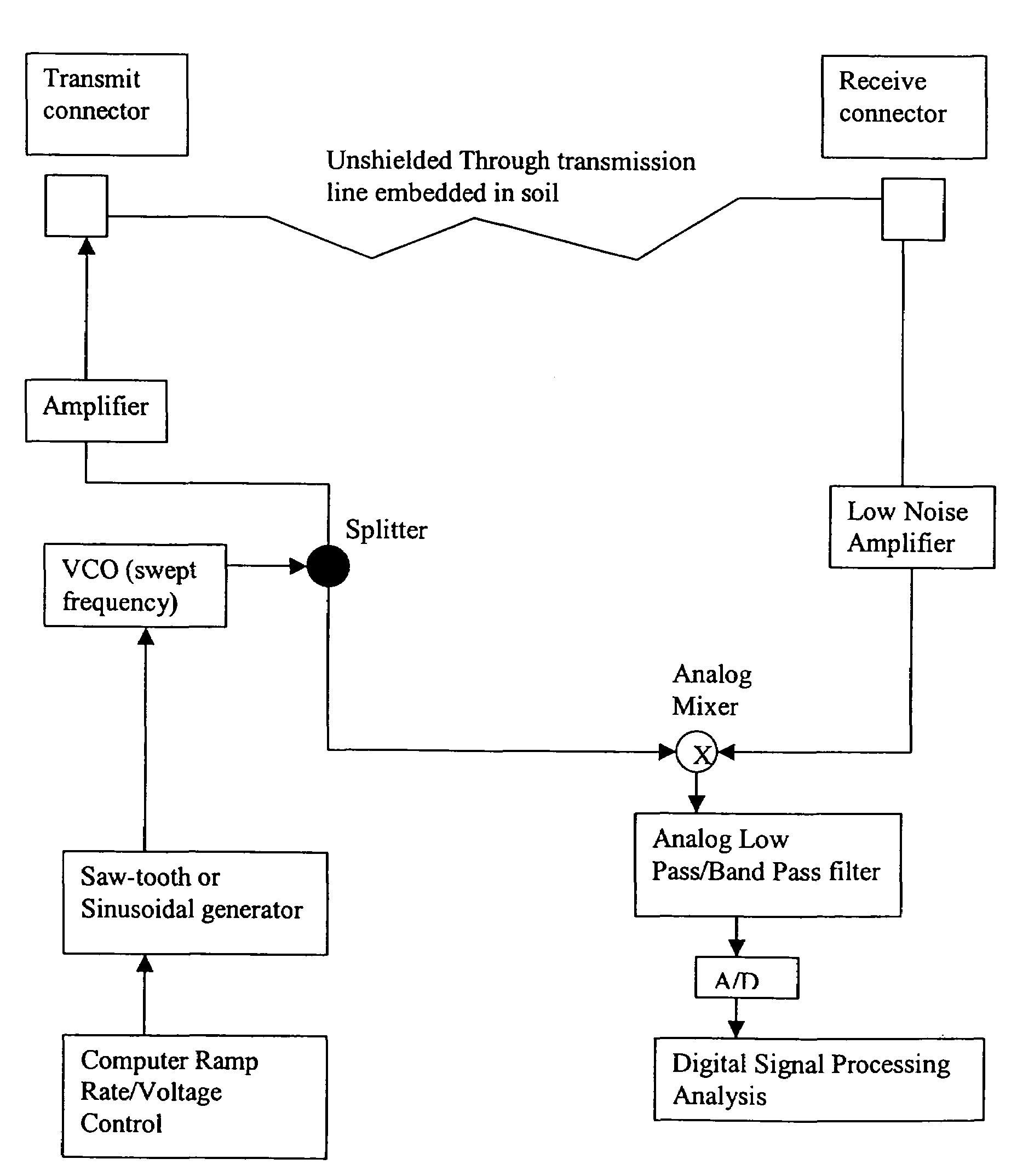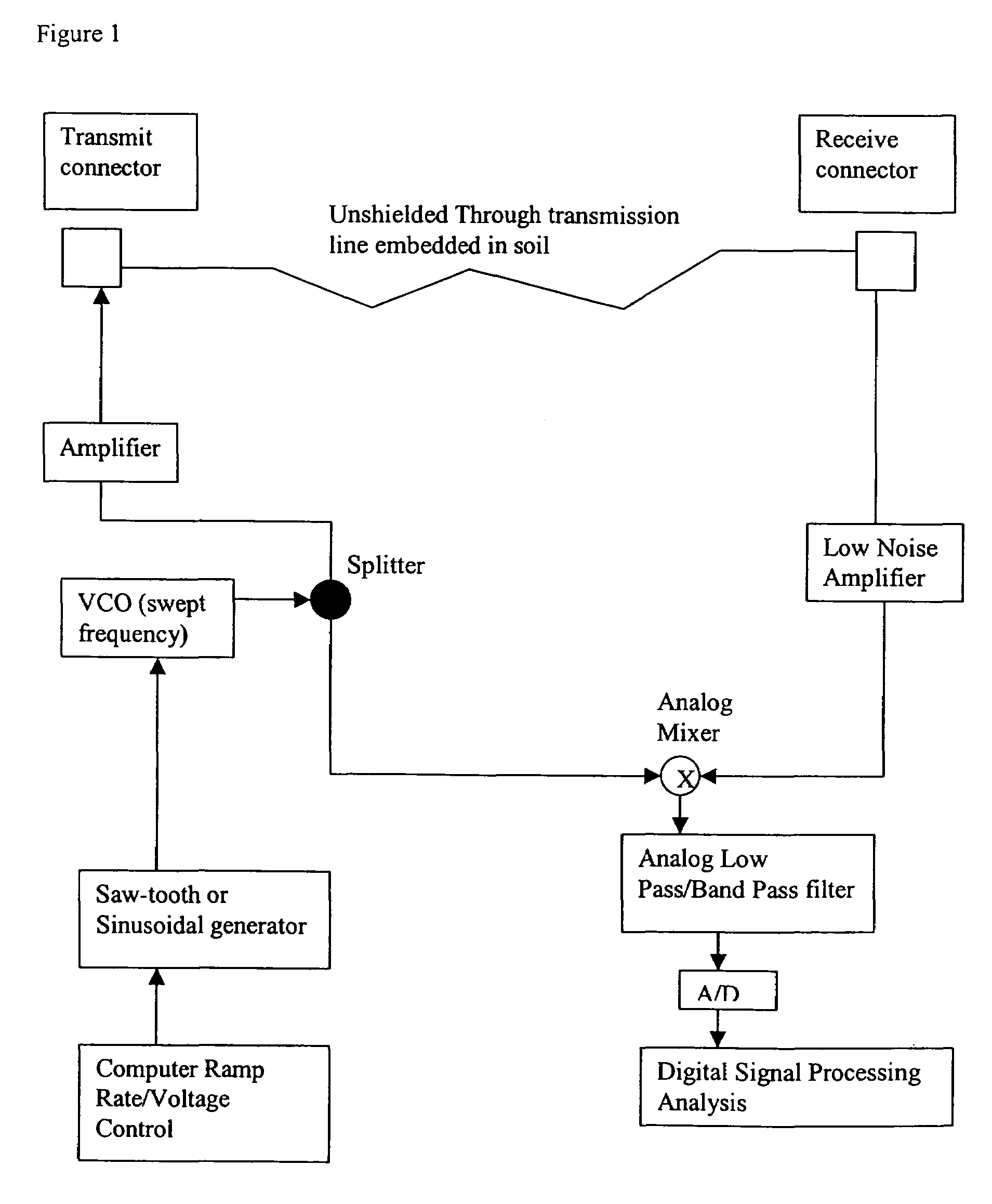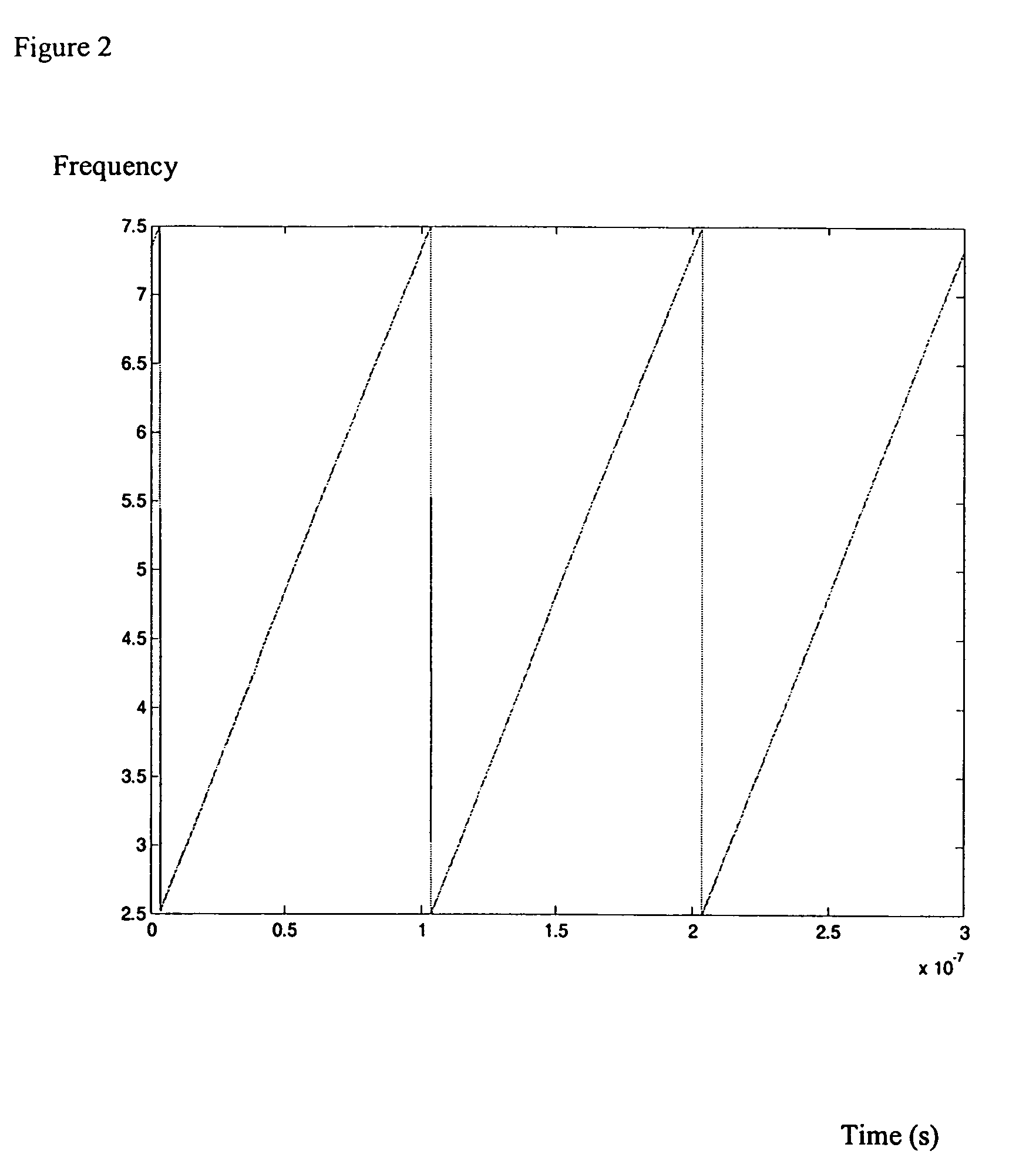Soil moisture sensor
- Summary
- Abstract
- Description
- Claims
- Application Information
AI Technical Summary
Benefits of technology
Problems solved by technology
Method used
Image
Examples
example 1
[0074]A preferred apparatus was constructed for measuring the moisture of soil which is shown in FIG. 1 and described above.
[0075]Step 1: Generate a control voltage in the form of a Saw Tooth or Sinusoidal waveform whose voltage range is such that the preferred maximum frequency deviation of the voltage controlled oscillator (VCO) is less than 100 MHz in order to achieve an accurate measure of moisture. The frequency repetition rate should be at least 1 kHz when utilizing a 100 MHz frequency deviation. In the generation of this control voltage signal it is imperative that either a continuously varying analog signal is utilized or in the case of digital synthesis techniques that the rate of change between the discrete voltage steps are rapid enough to ensure that the received signal 1 is at a different frequency than the internal reference signal 2 when both arrive at the mixer of steps 5 and 8. It should be noted that in the discrete generation version of producing the control volta...
PUM
 Login to View More
Login to View More Abstract
Description
Claims
Application Information
 Login to View More
Login to View More - R&D
- Intellectual Property
- Life Sciences
- Materials
- Tech Scout
- Unparalleled Data Quality
- Higher Quality Content
- 60% Fewer Hallucinations
Browse by: Latest US Patents, China's latest patents, Technical Efficacy Thesaurus, Application Domain, Technology Topic, Popular Technical Reports.
© 2025 PatSnap. All rights reserved.Legal|Privacy policy|Modern Slavery Act Transparency Statement|Sitemap|About US| Contact US: help@patsnap.com



